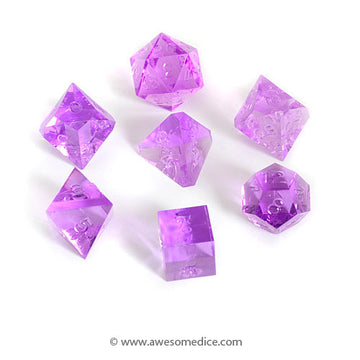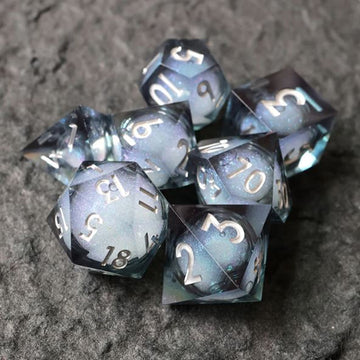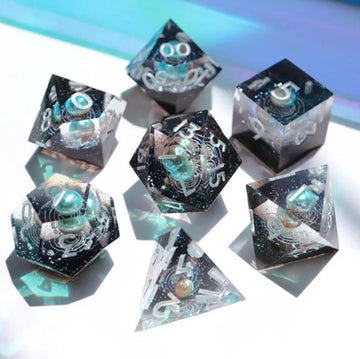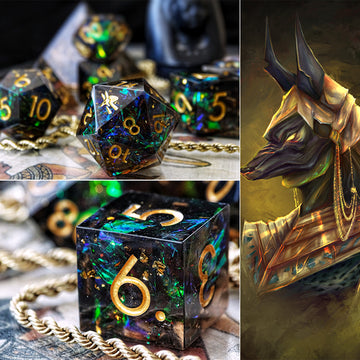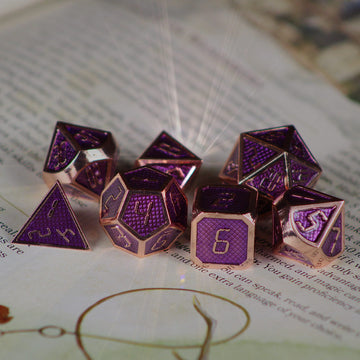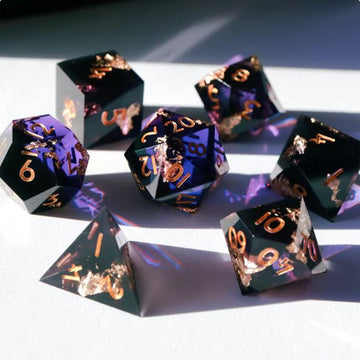A lot of gamers are big fans of the GameScience precision dice, with their sharp edges that are supposed to roll closer to true than most other RPG gaming dice. How much of a difference there is between GameScience dice and dice produced by other gaming dice manufacturers remains a debate, but defenders of Game Science dice have a lot of logical arguments on their side.
The one problem that all gamers will face when purchasing Game Science precision dice, however, is that the number on the dice are not inked. In order to easily use the dice for gaming, you first need a way to fill in the numbers to make them easy to read.
How to Ink Numbers on Game Science Dice
There are a number of different methods that can be used to fill in the numbers on Game Science precision dice, but we’re going to start with the one that works best. Then we’ll go ahead and mention the alternatives, some of which date back to the good ‘ol days of the D&D boxed set.
To ink your Game Science dice numbers:
- First wash the dice. In the plastic injection molding process that’s used to make the dice, a release agent is commonly used on the plasticizer that can leave a residue on the dice. This residue could screw up your inking process. Wash the dice thoroughly, perhaps with a tiny amount of dish soap, under warm water.
- Dry the dice thoroughly and then leave the dice to air dry completely. You do not want any water on the dice when you start inking — especially in the grooves of the numbers, which is just where the water will collect. If you want instant gratification, skip the washing step entirely! If you do wash the dice, be sure to leave plenty of time (hours) for them to air dry, even after you’ve cloth dried them.
- Get an ultra-fine point permanent marker. This is what you will use to ink the dice. These ultra-fine point markers are available in a variety of colors, and sometimes you can even find them in metallic colors, which looks great on the dice.
- Use the marker to carefully ink the grooves of the numbers. You will have to make several passes on each number, but when you’re done you should have a perfectly opaque number with the walls of the groove inked as well as the bottom. If you accidentally get ink on the face of the die, don’t worry. As long as you act quickly you can wipe it off with a damp rag or paper towel.
And that’s all there is to it: wash the dice, let them dry, use the ultra-fine point permanent marker. For very dark dice you can use paint pens to ink them with white, or metallic paints to make them easy to read.
Other Dice Inking Methods
While we think that using the permanent marker or paint pen is the best way to ink the Game Science dice, that certainly isn’t the only way, nor was it the way that gamers originally used. Here are some alternate methods for inking the dice:
- Crayons: back in the days of the original D&D boxed sets, we used crayons to fill in the numbers on the crummy un-inked dice that came with the set. The idea here is to grind the crayon into the numbers, smearing it everywhere else in the process. You can then use a rag or paper towel to wipe the crayon off of the flat faces of the dice. The problems with this method are that while it works, it’s not terribly attractive and it doesn’t get you perfectly opaque numbering. Also the crayon eventually wears off through sufficient handling and use.
- Wet Erase Markers: another method similar to the crayon one is to use wet erase markers to color in the numbers. Like the crayon, you’ll end up smearing some across the face of the dice, but with wet erase you can easily wipe it up. The end result is more attractive than the crayon method, but it doesn’t get you the really dark opaque uniform numbers that the permanent marker will. Some parts of the numbers will be lighter than others, where some of the die color shows through.

